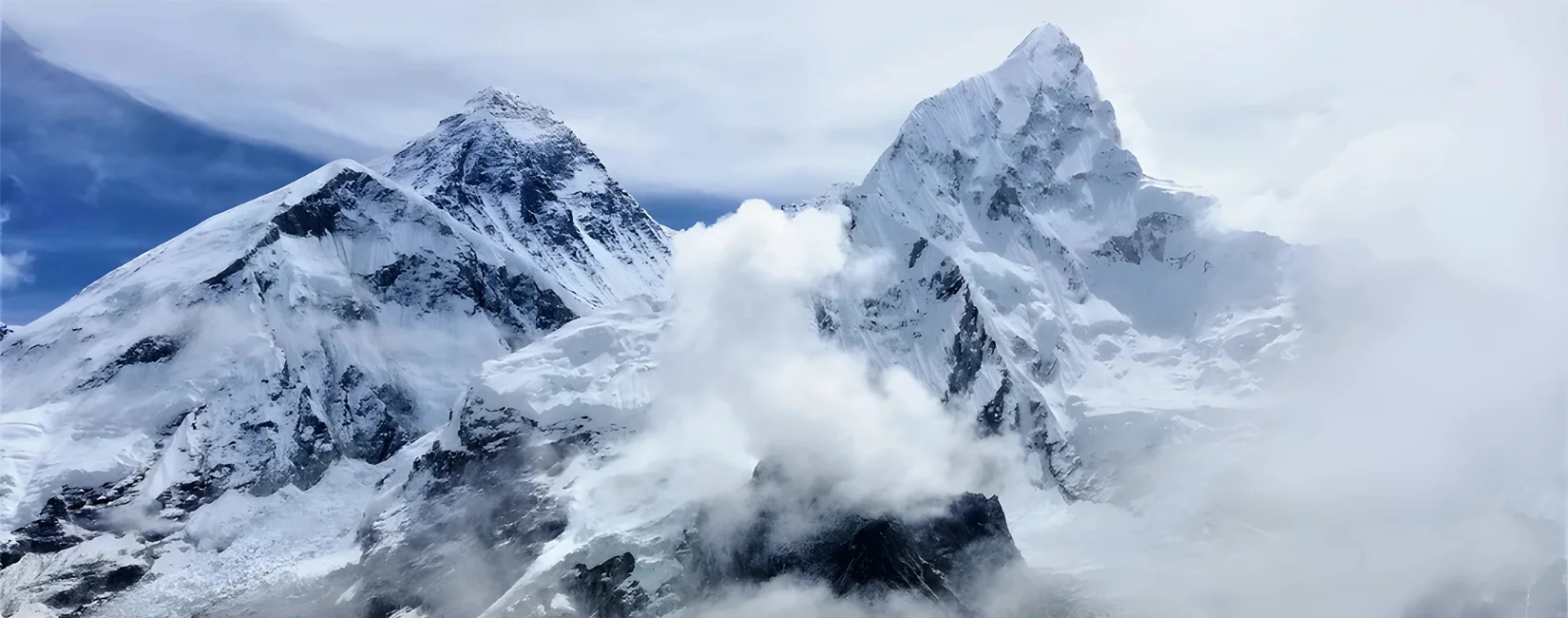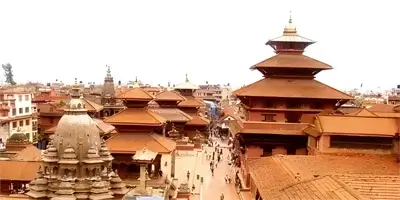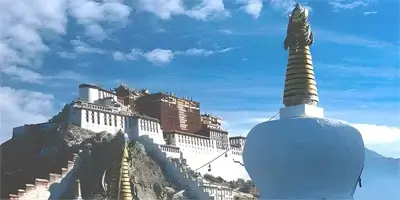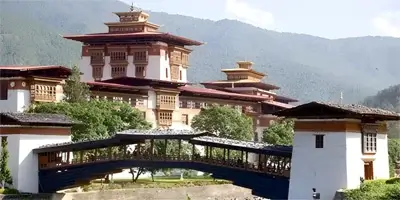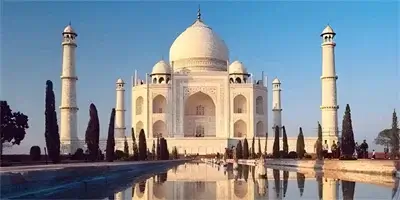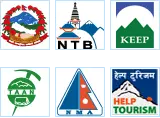Mount Everest Base Camp Trek - 14 Days
We offer a short Everest Base Camp Trek 14 days program for those who have only 14 days in Nepal and want to reach Everest Base Camp and Kala Patthar. If you do our 14 days Everest Base Camp Trek, you will reach Everest Base Camp at an altitude of 5,364 meters and Kala Patthar at 5,545 meters.
A short trek to Everest Base Camp is an exciting adventure that can be completed in a short time and offers a breathtaking view of the world's highest peak, Mount Everest. The standard trek to Everest Base Camp usually takes 14 days just for the trekking part, but there are shorter options depending on your preferences and time constraints.
The Everest Base Camp trekking route is also known as Everest Base Camp and Kala Patthar Trek as it includes both. The trek offers breathtaking views of some of the world's highest peaks as well as the opportunity to experience the unique Sherpa culture, ancient Buddhist monasteries and stunning Himalayan landscapes from different vantage points.
The Everest Base Camp Trek is a moderately difficult to challenging high mountain trek with a total length of around 130 kilometers. The trek is on the mountain trails with steep ascents and descents, and the high altitude can be demanding of physical fitness. However, with proper preparation and acclimatization as well as a gradual ascent, it can be done by most physically fit people.
Usually the trek starts with a flight from Kathmandu to Lukla, a small airport in the Everest region. It is common to trek to Everest base camp via Tengboche and return via Tengboche, but our route is different, you will trek to Everest base camp via Phortse village and return via Tengboche.
Phortse village is an agricultural village, growing potatoes and buckwheat. Phortse village has also been developed as a model ecotourism village. From Phortse village (3,810 m) you can have spectacular views of Mt. Cho Oyu, Machhermo Peak, Thamserku, Khumbu Yul Lha, and Kwangde Peak. After Phortse village we have to pass through a narrow trail between Phortse village to Pangboche but get more chances to see Himalayan Thar, Yak, Pheasant, and Eagle, etc.
From Lukla, trekkers follow the trail through various Sherpa villages, including Namche Bazaar, Phortse village, Dingboche, and Lobuche, Gorakshep, before reaching Everest Base Camp (5,364 m). Kala Patthar (5,545 m), a nearby peak, offers a stunning viewpoint for panoramic views of Mount Everest and the surrounding peaks.
After reaching Everest Base Camp and Kala Patthar, trekkers typically retrace their steps back to Lukla to conclude the trek. The return journey follows almost the same trail as the ascent, but it can be faster due to descending terrain. However, it is still essential to take proper care of your physical well-being, as the downhill trek can be hard on your knees and joints.
Upon reaching Lukla, you will take a short domestic flight back to Kathmandu. It is important to note that flights from Lukla are subject to weather conditions, so there might be occasional delays or cancellations. It's advisable to keep a buffer day in your itinerary in case of any unforeseen circumstances.
The trek to Everest Base Camp and Kala Patthar takes you to high altitude areas. It is always better to have plenty of time for acclimatization on the route, although we offer 14 days Everest Base Camp Trek for those who are short on time, with only one acclimatization day in Namche Bazaar.
The Everest Base Camp trek 14 days itinerary given below is a general itinerary that gradually leads to higher places to prevent the possibility of altitude sickness, but can be customized according to your preferences and needs.
14 days Everest Base Camp Trek includes 10 days trekking (11 days from Kathmandu) and one day rest in Kathmandu, two days for arrival and departure from Kathmandu.
About Lukla Flight
There might be slight alterations to the trek itinerary, mainly during peak trek seasons (March, April, May, October, and November), as the flight to Lukla will be from Ramechhap/Manthali airport instead of Kathmandu airport due to traffic congestion. At other times, the flight will be from Kathmandu. To catch a flight from Ramechhap, you must leave Kathmandu and head to Manthali around 2:30 AM on the scheduled departure date. The drive will take about 4 to 5 hours.
Mount Everest Base Camp Trek Highlights
- Reach the base camp of the highest mountain in the world, Mount Everest, in a short time.
- Reach the Everest Base Camp and Kala Patthar for panoramic views.
- Experience the thrilling flight to Lukla, landing on a short and steep airstrip.
- Witness breathtaking views of Mount Everest, Lhotse, and Ama Dablam, among other towering Himalayan peaks.
- Explore the Sagarmatha National Park, a UNESCO World Heritage Site. It is home to diverse flora and fauna, rhododendron forests, Himalayan tahr and the elusive red panda.
- Get a glimpse of the Khumbu glacier and Khumbu icefall.
- Experience the culture and hospitality of the Sherpa people.
- Hike through the village of Phortse to experience an authentic village and increase your chances of spotting wildlife.
- Visit to Tengboche Monastery, one of the highest monasteries in the world.
- Staying in mountain lodges along the route, enjoy local meals, and interact with other travelers.
Mount Everest Base Camp Trek Cost
The cost of the Short Everest Base Camp trekking package depends on various factors. These include the size of the group (Larger groups might be able to negotiate better rates, while solo trekkers or small groups may pay a premium for personalized services), the level of services included (budget, standard, luxury) and the reputation and standard of the trekking company you choose.
The Alpine Adventure Club announces the cost and some fixed departure dates for the Short Everest Base Camp Trek for groups joining in 2024 and 2025, the cost includes the standard service. If you wish to participate in a private trek, the cost will be different.
Mount Everest Base Camp Trek 14 Days Itinerary
Day 01: Arrive in Kathmandu
Day 02: Flight to Lukla and trek to Phakding (2,610 m)
Day 03: Trek to Namche Bazaar (3,440 m)
Day 04: Acclimatization day in Namche Bazaar
Day 05: Trek to Phortse Village (3,810 m)
Day 06: Trek to Dingboche (4,410 m)
Day 07: Trek to Lobuche (4,910 m)
Day 08: Trek to Gorak Shep (5,160 m) and visit Everest Base Camp (5,364 m)
Day 09: Gorakshep Hike to Kala Pattar and trek to Pheriche (4,240 m)
Day 10: Trek to Namche Bazaar (3,440 m)
Day 11: Trek to Lukla (2,840 m)
Day 12: Lukla fly back to Kathmandu (1,350 m)
Day 13: Reserve Day in Kathmandu
Day 14: Depart Kathmandu

